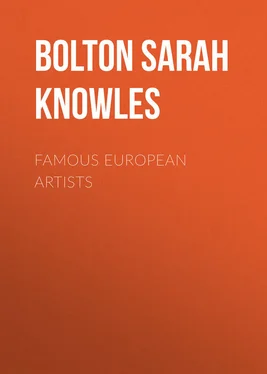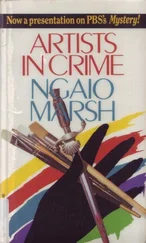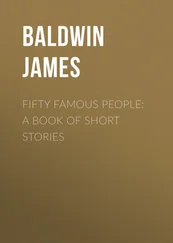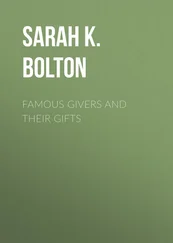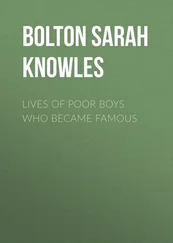Sarah Bolton - Famous European Artists
Здесь есть возможность читать онлайн «Sarah Bolton - Famous European Artists» — ознакомительный отрывок электронной книги совершенно бесплатно, а после прочтения отрывка купить полную версию. В некоторых случаях можно слушать аудио, скачать через торрент в формате fb2 и присутствует краткое содержание. ISBN: , Жанр: foreign_prose, foreign_antique, foreign_language, на английском языке. Описание произведения, (предисловие) а так же отзывы посетителей доступны на портале библиотеки ЛибКат.
- Название:Famous European Artists
- Автор:
- Жанр:
- Год:неизвестен
- ISBN:http://www.gutenberg.org/ebooks/39380
- Рейтинг книги:5 / 5. Голосов: 1
-
Избранное:Добавить в избранное
- Отзывы:
-
Ваша оценка:
- 100
- 1
- 2
- 3
- 4
- 5
Famous European Artists: краткое содержание, описание и аннотация
Предлагаем к чтению аннотацию, описание, краткое содержание или предисловие (зависит от того, что написал сам автор книги «Famous European Artists»). Если вы не нашли необходимую информацию о книге — напишите в комментариях, мы постараемся отыскать её.
Famous European Artists — читать онлайн ознакомительный отрывок
Ниже представлен текст книги, разбитый по страницам. Система сохранения места последней прочитанной страницы, позволяет с удобством читать онлайн бесплатно книгу «Famous European Artists», без необходимости каждый раз заново искать на чём Вы остановились. Поставьте закладку, и сможете в любой момент перейти на страницу, на которой закончили чтение.
Интервал:
Закладка:
The great sculptor never ceased to work or to study. When old he drew a picture representing himself as an aged man in a cart, with these words underneath: Ancora impara (still learning). He painted but two portraits, one of Vittoria Colonna, and one of young Tommaso dei Cavalieri, whom he tenderly loved. To this youth, whom Varchi, the Florentine professor and court scholar, declared to be the most attractive young man he had ever known, Michael Angelo wrote this beautiful sonnet: —
"Through thee I catch a gleam of tender glow,
Which with my own eyes I had failed to see;
And walking onward step by step with thee,
The once oppressing burdens lighter grow.
With thee, my grovelling thoughts I heavenward raise,
Borne upward by thy bold, aspiring wing;
I follow where thou wilt, – a helpless thing,
Cold in the sun, and warm in winter days.
My will, my friend, rests only upon thine;
Thy heart must every thought of mine supply;
My mind expression finds in thee alone.
Thus like the moonlight's silver ray I shine:
We only see her beams on the far sky,
When the sun's fiery rays are o'er her thrown."
His last work was a group of the Virgin and the dead Christ, which he intended should be placed on an altar over his own tomb; but it was left unfinished from a flaw in the marble, and is now in the cathedral in Florence. Vasari found the aged artist working at it late at night, when he had arisen from his bed because he could not sleep. A tallow candle was placed in his pasteboard cap, so as to leave his hands free for work. Once, as they were looking at the statue, Michael Angelo suffered the lantern which he held in his hand to fall, and they were left in darkness. He remarked, "I am so old that Death often pulls me by the cape, and bids me go with him; some day I shall fall myself, like this lamp, and the light of life will be extinguished."
To the last Michael Angelo was always learning. He used often to visit the Vatican to study the Torso Belvedere, which he declared had been of the greatest benefit to him.
In 1563-64 he was elected vice-president of the Florentine Academy of Fine Arts. That winter his strength failed rapidly, though all was done for him that love and honor could possibly do, for he had many devoted friends among all classes, and was constantly aiding artists and others. He did not fear death, for he said, "If life be a pleasure, since death also is sent by the hand of the same master, neither should that displease us."
Between three and four o'clock in the afternoon of the 18th of February, 1564, the same month in which Vittoria died, the great man passed away, in the ninetieth year of his age. Daniele da Volterra, Condivi, and Cavalieri stood by his bedside. His last words to them were, "I give my soul to God, my body to the earth, and my worldly possessions to my nearest of kin."
The pope and the Romans were determined to keep the dead Michael Angelo in Rome; but his wish had been to lie in Florence. The body, therefore, was conveyed to the latter city, disguised as a bale of merchandise, and buried in Santa Croce, on Sunday night, March 12th, the Tuscan artists following with their lighted torches, accompanied by thousands of citizens. In the month of July a grand memorial service was held, in the Church of San Lorenzo, for the illustrious dead, paintings and statuary surrounding a catafalque fifty-four feet high.
After thirty years of voluntary exile, the melancholy, solitary, great-souled man lay in his native Florence. He had loved liberty and uprightness. He had been ambitious, and devoted to his masterly work, with the will-power and intensity which belong to genius. He had allowed no obstacles to stand in his path, – neither lack of money nor jealousy of artists. He had faith in himself. He spoke sometimes too plainly, but almost always justly. Cold and unapproachable though he was, children loved him, and for them he would stop and make sketches on the street. He had the fearlessness of one who rightly counts manhood above all titles. He was too noble to be trifling, or petty, or self-indulgent. Great in sculpture, painting, poetry, architecture, engineering, character, he has left an imperishable name. Taine says, "There are four men in the world of art and of literature exalted above all others, and to such a degree as to seem to belong to another race; namely, Dante, Shakespeare, Beethoven, and Michael Angelo."
LEONARDO DA VINCI
"The world perhaps contains no example of a genius so universal, so creative, so incapable of self-contentment, so athirst for the infinite, so naturally refined, so far in advance of his own and of subsequent ages. His countenances express incredible sensibility and mental power; they overflow with unexpressed ideas and emotions. Michael Angelo's personages alongside of his are simply heroic athletes; Raphael's virgins are only placid children, whose sleeping souls have not yet lived." Thus writes Taine of Da Vinci, in his "Travels in Italy."
Mrs. Jameson calls Leonardo da Vinci, in her "Early Italian Painters," " The miracle of that age of miracles. Ardent and versatile as youth; patient and persevering as age; a most profound and original thinker; the greatest mathematician and most ingenious mechanic of his time; architect, chemist, engineer, musician, poet, painter!"
Hallam, in his "History of the Literature of Europe," says of the published extracts from the great volumes of manuscript left by Leonardo, "These are, according to our common estimate of the age in which he lived, more like revelations of physical truths vouchsafed to a single mind, than the superstructure of its reasoning upon any established basis. The discoveries which made Galileo, Kepler, Castelli, and other names illustrious – the system of Copernicus – the very theories of recent geologists, are anticipated by Da Vinci within the compass of a few pages, not perhaps in the most precise language, or on the most conclusive reasoning, but so as to strike us with something like the awe of preternatural knowledge. In an age of so much dogmatism, he first laid down the grand principle of Bacon, that experiment and observation must be the guides to just theory in the investigation of nature.
"If any doubt could be harbored, not as to the right of Leonardo da Vinci to stand as the first name of the fifteenth century, which is beyond all doubt, but as to his originality in so many discoveries, which probably no one man, especially in such circumstances, has ever made, it must be by an hypothesis, not very untenable, that some parts of physical science had already attained a height which mere books do not record."
This man, whom Vasari thinks "specially endowed by the hand of God himself," was born in 1452, at Castello da Vinci, a village in the Val d'Arno, near Florence. His father, Piero Antonio da Vinci, was a notary of the republic, a man of considerable property and influence. When he was twenty-five, he married the first of his four wives, Albiera di Giovanni Amadori, in 1452, and brought home his illegitimate son, Leonardo, born the same year, whom she tenderly cared for as her own.
Of Leonardo's mother, Caterina, little is known, save that five years later she married, presumably in her own circle. Among the twelve other children who came into the home of the advocate, Leonardo was the especial pet and pride, probably because he seemed to have been given all the talents originally intended for the Da Vinci family.
The handsome boy, whose "beauty of person," says Vasari, "was such that it has never been sufficiently extolled," and with "a grace beyond expression," cheerful, eager, enthusiastic, and warmhearted, when sent to school, learned everything with avidity. "In arithmetic he often confounded the master who taught him, by his reasonings and by the difficulty of the problems he proposed." He had that omnivorous appetite for books which Higginson calls the sure indication of genius.
Читать дальшеИнтервал:
Закладка:
Похожие книги на «Famous European Artists»
Представляем Вашему вниманию похожие книги на «Famous European Artists» списком для выбора. Мы отобрали схожую по названию и смыслу литературу в надежде предоставить читателям больше вариантов отыскать новые, интересные, ещё непрочитанные произведения.
Обсуждение, отзывы о книге «Famous European Artists» и просто собственные мнения читателей. Оставьте ваши комментарии, напишите, что Вы думаете о произведении, его смысле или главных героях. Укажите что конкретно понравилось, а что нет, и почему Вы так считаете.
